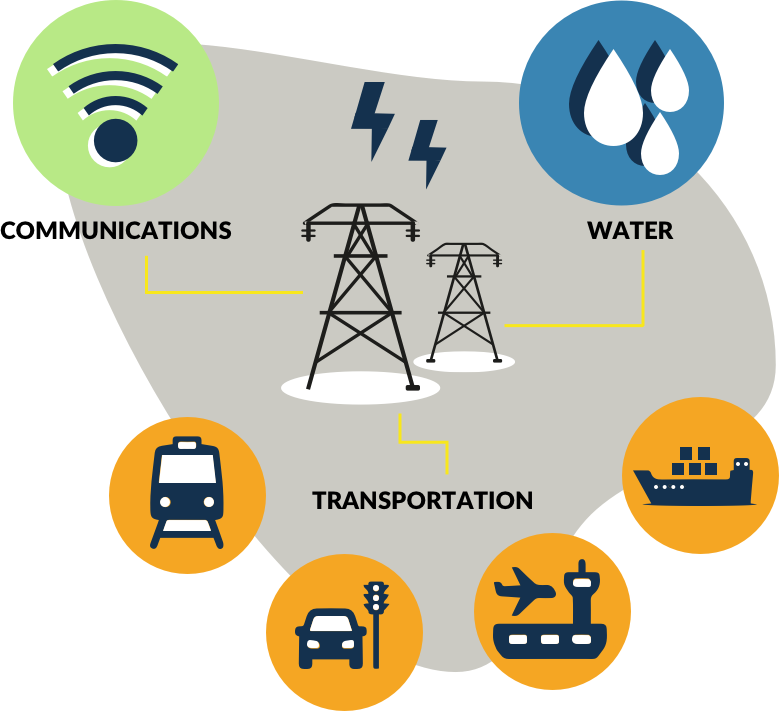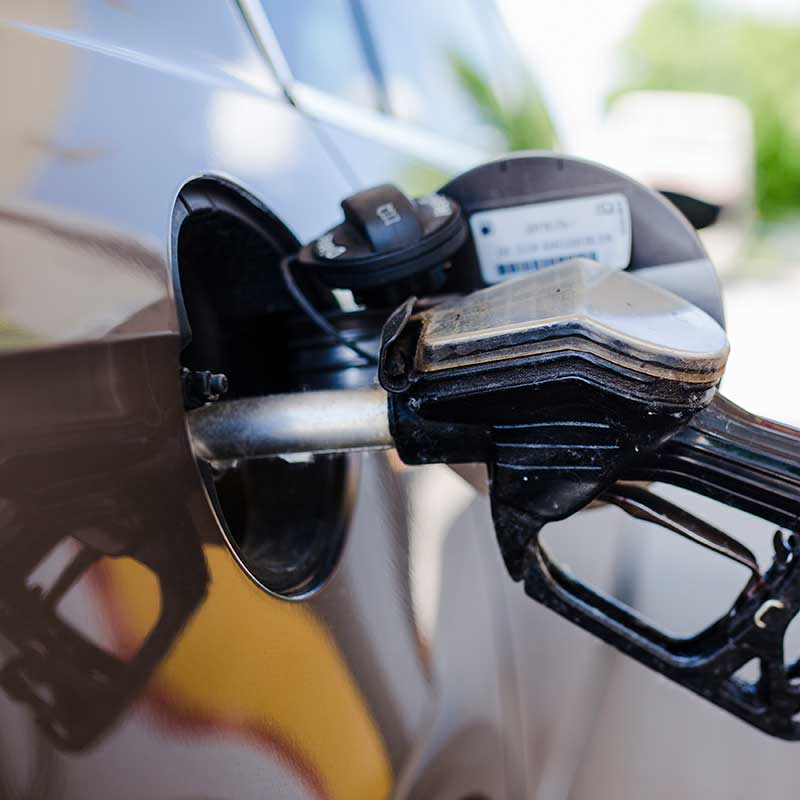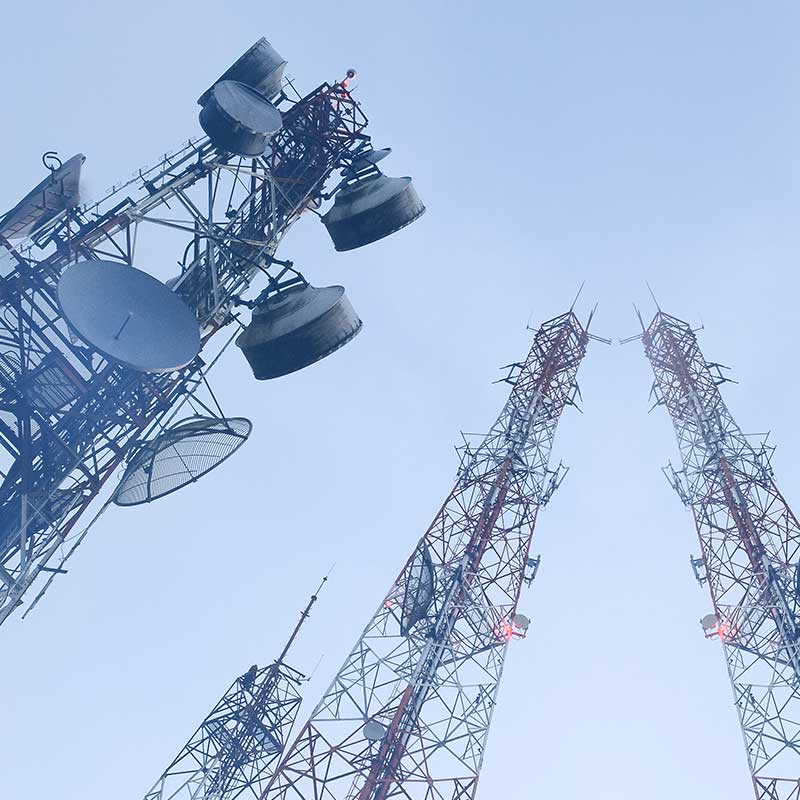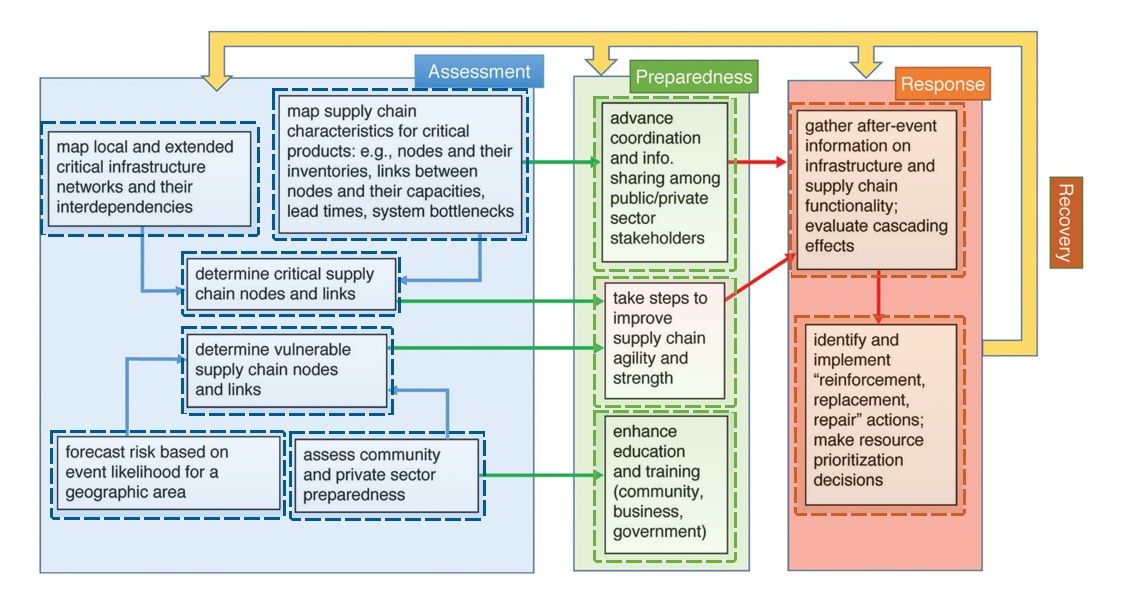Supply chains rely on critical infrastructure such as power, communication, transportation facilities (e.g., roads, airports, ports)—all of which can be damaged and disrupted during a disaster. The magnitude of damage, and how quickly the system can recover from damage, depends on the resilience of the infrastructure; and the status of the infrastructure, in turn, can profoundly affect supply and demand (and ability of supply chains to meet the demand) for many critical products and services.
Understanding how interdependencies among critical systems can lead to cascading failures aids in emergency preparedness and supports risk management decision making when responding to events. Many critical supply chains are dependent upon the functioning of critical infrastructure such as energy supply (electricity, fuels), and in turn the energy sector is often dependent on the functioning of communications, water, and transportation systems. A widespread power outage—especially if it lasts for an extended period—is likely to impact the communications network, the water network, and critical supply chains for fuel, food, and other critical supplies.


Hurricanes Irma and Maria caused almost complete disruption to the Virgin Islands’ power systems. In many places, power outages lasted for more than four months, with many cascading impacts on the ability to resume normal commercial and other operations across the island. While wind and solar power generation survived, many places relied on the electric power grid. They were equipped with back-up generators, but many of these eventually failed because they were not designed to run continuously for months - obtaining generator fuel over this extended time was also a challenge.
Some grocery stores were open with items on the shelves but they were not able to execute EBT card transactions due to power outages or disruptions in communication towers. Deliveries from distribution centers to grocery stores were also disrupted due to road conditions or shortages of truck drivers.

In places where there was investment in reducing vulnerabilities (especially for hardening electric power systems), benefits are seen in terms of minimizing storm disruptions and thus bolstering the speed with which local economies could resume normal operations.
Some key steps and strategies to advance this recommendation include the following:
- For the given jurisdiction of concern (i.e., local, state, regional), support pre-disaster assessment of the criticality, vulnerability, and dependencies of key supply chain nodes, links, and supporting infrastructure; and develop protocols and systems for gathering and regularly updating information about demand, supply, infrastructure condition, and supply chain functionality. Many private sector supply chains already utilize sophisticated tools for sensing supply and demand changes, system bottlenecks and vulnerabilities, and other critical information. Public sector officials need comparable capabilities and tools that can interface with, and build upon, these private sector capabilities.
- Emergency management offices at the local, state, and regional levels (working with critical partners, for instance, in the private sector and in academic research centers) are likely best suited to lead much of this information collection and analysis work. FEMA can play a critical leadership role, however, in building capacity and providing support for such efforts—not only through financial incentives (i.e., grant programs) but also through active training activities that bring together local knowledge with experience and perspectives drawn from government and business leaders nationwide.








